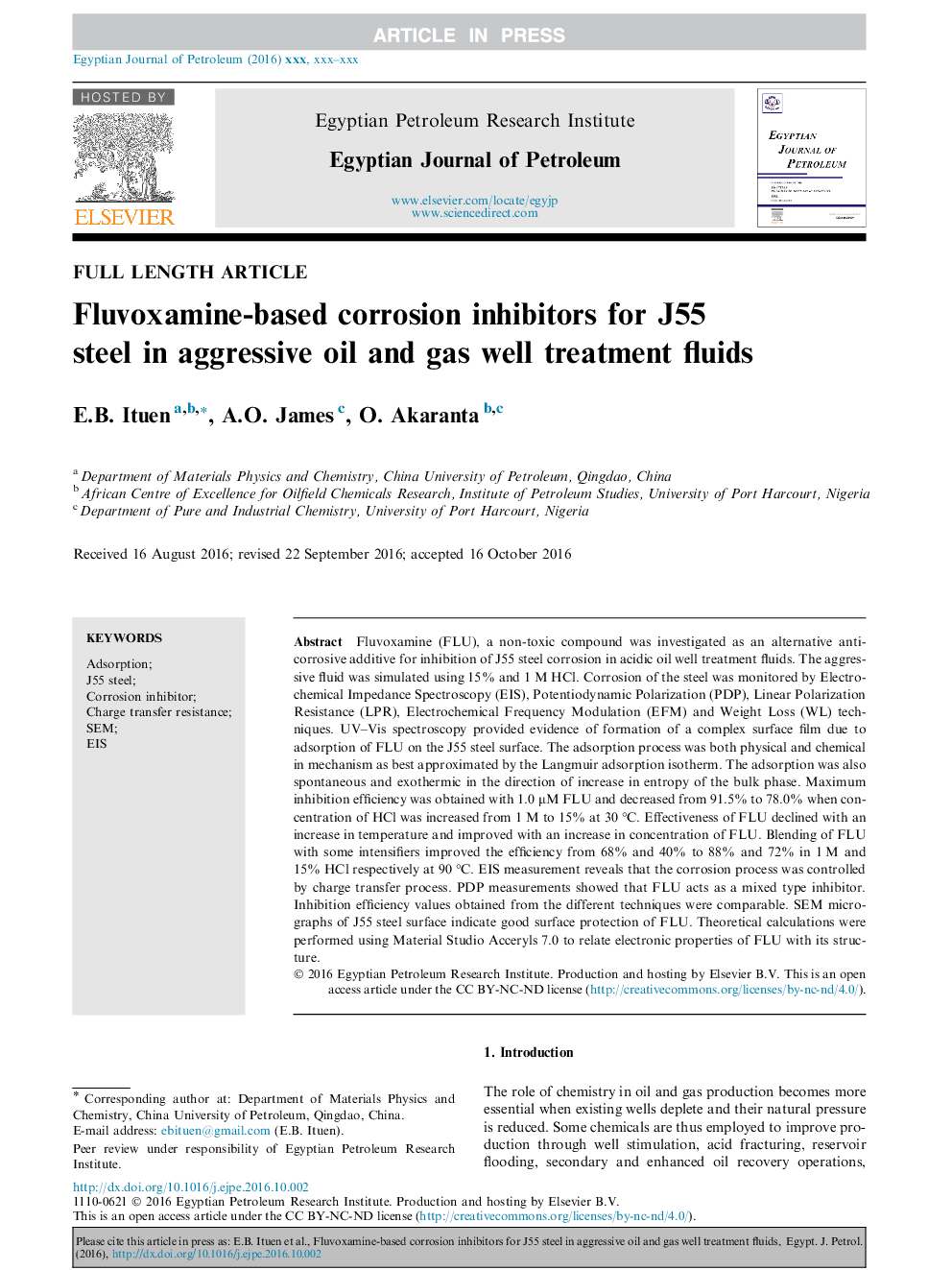| Article ID | Journal | Published Year | Pages | File Type |
|---|---|---|---|---|
| 5484572 | Egyptian Journal of Petroleum | 2017 | 12 Pages |
Abstract
Fluvoxamine (FLU), a non-toxic compound was investigated as an alternative anti-corrosive additive for inhibition of J55 steel corrosion in acidic oil well treatment fluids. The aggressive fluid was simulated using 15% and 1 M HCl. Corrosion of the steel was monitored by Electrochemical Impedance Spectroscopy (EIS), Potentiodynamic Polarization (PDP), Linear Polarization Resistance (LPR), Electrochemical Frequency Modulation (EFM) and Weight Loss (WL) techniques. UV-Vis spectroscopy provided evidence of formation of a complex surface film due to adsorption of FLU on the J55 steel surface. The adsorption process was both physical and chemical in mechanism as best approximated by the Langmuir adsorption isotherm. The adsorption was also spontaneous and exothermic in the direction of increase in entropy of the bulk phase. Maximum inhibition efficiency was obtained with 1.0 μM FLU and decreased from 91.5% to 78.0% when concentration of HCl was increased from 1 M to 15% at 30 °C. Effectiveness of FLU declined with an increase in temperature and improved with an increase in concentration of FLU. Blending of FLU with some intensifiers improved the efficiency from 68% and 40% to 88% and 72% in 1 M and 15% HCl respectively at 90 °C. EIS measurement reveals that the corrosion process was controlled by charge transfer process. PDP measurements showed that FLU acts as a mixed type inhibitor. Inhibition efficiency values obtained from the different techniques were comparable. SEM micrographs of J55 steel surface indicate good surface protection of FLU. Theoretical calculations were performed using Material Studio Acceryls 7.0 to relate electronic properties of FLU with its structure.
Related Topics
Physical Sciences and Engineering
Energy
Energy (General)
Authors
E.B. Ituen, A.O. James, O. Akaranta,
